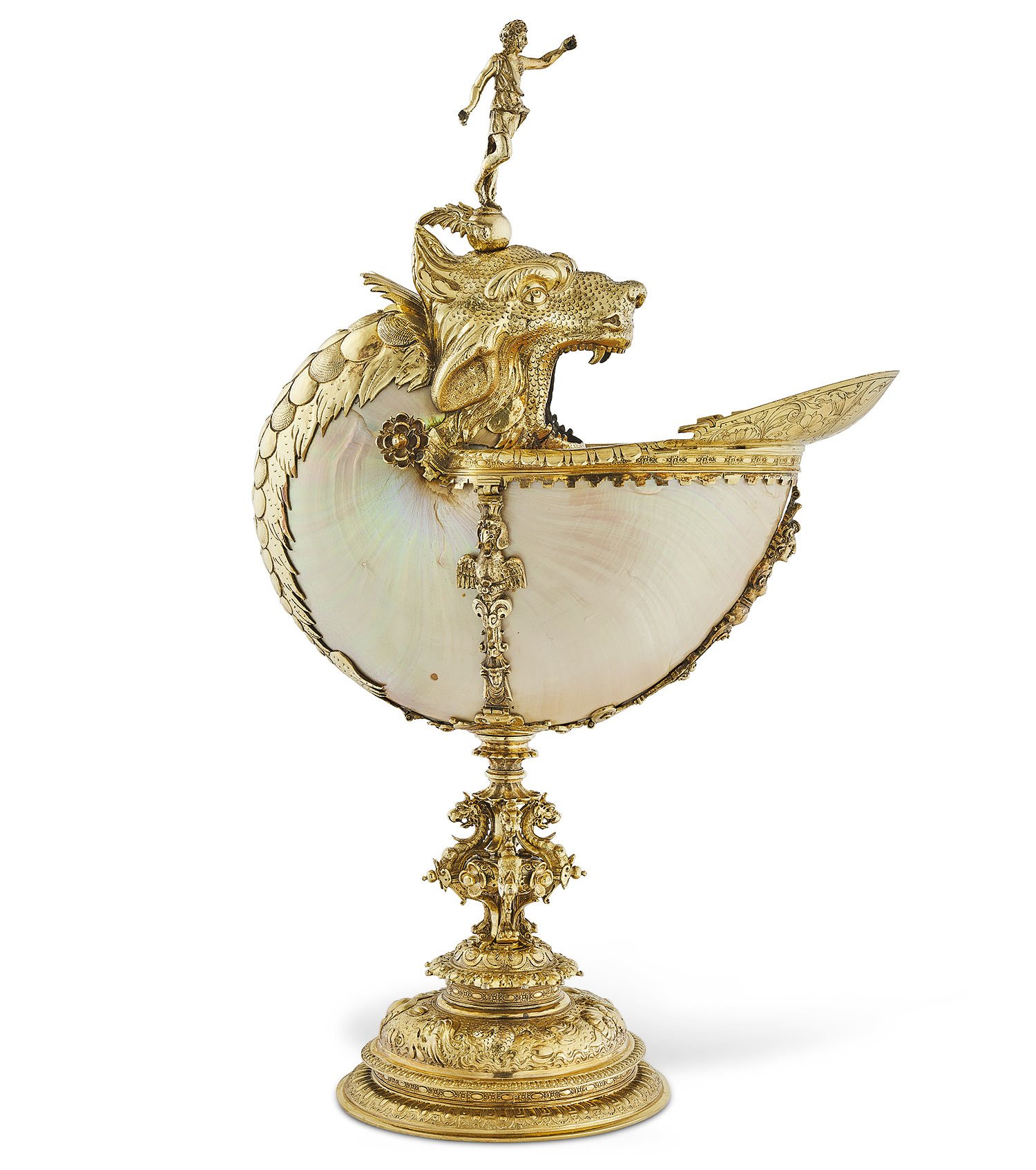
A trove of some 600 objects collected by the French branch of the famed Rothschild banking family—including paintings, furniture, enamels, maiolica, Renaissance jewelry, and silver—will go on sale at Christie’s this fall. The first auction in North America of objects amassed by the family, whose name is synonymous with wealth and luxe collecting, is expected to fetch in excess of $20 million.
The sale will take place in October at the auction house’s Rockefeller Plaza headquarters. Highlights of the sale are currently on a world tour, having just been viewed in Hong Kong and bound next for London, where they will be displayed July 1–7.
Follower of Rembrandt, The Triumph of David (late 17th century). Estimate: $1.5 million. Courtesy of Christie’s.
“Throughout the 19th century, the Rothschild family’s collecting was the stuff of legend,” Jonathan Rendell, deputy chairman of Christie’s Americas, told Artnet News. “They combined great paintings and works of art into interiors in what is now known as goût Rothschild (Rothschild taste).’”
He explained that the sale will include Kunstkammer objects including nautilus shell cups, Renaissance-style jewels, and important Urbino, Gubbio and Hispano-Moresque ceramics and Sèvres porcelain, together with Dutch paintings and Italian pietra dura cabinets. A highlight is a series of gilded leather panels depicting the triumph of David, attributed to a follower of Rembrandt and estimated to fetch $1.5 million. “Unseen in public for 150 years,” he added, “the Rothschild masterpieces are already causing a stir in the market.”
Highlights of the Rothschild Masterpieces sale. Courtesy of Christie’s.
Christie’s defines “the Rothschild taste” as “sumptuous domesticity,” and points out that it was highly influential on wealthy American collecting families such as the Vanderbilts, Astors, and Rockefellers.
The items were bought, largely during the later 19th century, by Baron James Mayer de Rothschild and his wife Betty, along with their son Baron Alphonse and his wife Leonora, to furnish their Château de Ferrières, near Paris, and their houses in the city. In 1862, they welcomed Napoleon III to a gala opening of the palatial Ferrières home, designed by architect Joseph Paxton—perhaps best known for the Crystal Palace in London, designed for the Great Exhibition of 1851.
Large hall inside the Château de Ferrières (photo ca. 2002), which the Rothschilds donated to France in 1975. (Photo: DeAgostini/Getty Images)
A German-French banker, Baron James was the founder of the French branch of the family and a major figure in the financing of the railroads and mining business that made France an industrial power after the Napoleonic Wars. Jean-Auguste Dominique Ingres painted a portrait of Betty that remains in the family’s collection. Alphonse, in addition to banking, operated a vineyard and owned and bred racehorses, among other activities.
Pierre Courteys, after Giulio Romano, Limoges enamel charger depicting the punishment of Niobe by Diana and Apollo (late 16th century). Estimate: $200,000. Courtesy of Christie’s.
Christie’s has handled countless items from the Rothschild family over more than 100 years. A July 2019 sale in London totaled $29.4 million, some 280% above the low estimate.